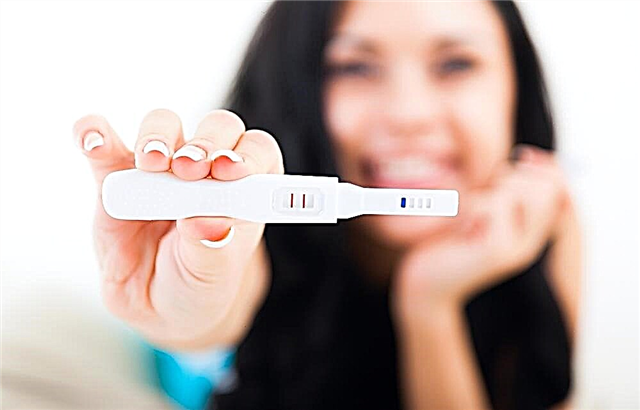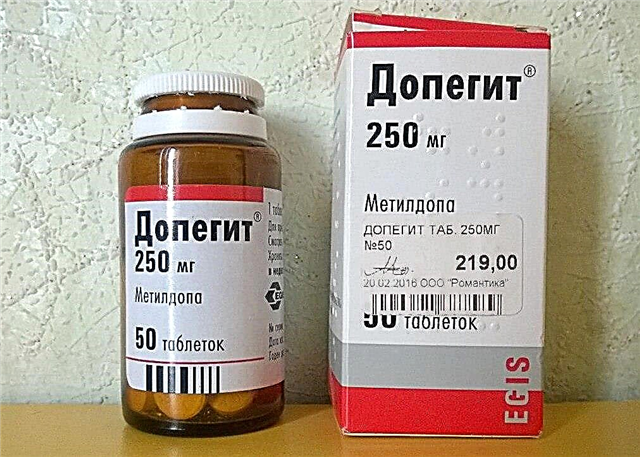If a child is blooming, what does it mean? Similar questions often arise among young parents facing the disease for the first time. However, do not panic and look for cures for sudden pimples on the face, cheeks, neck or other areas of the child's body. This ailment belongs to the normal process of development and formation of the child's body. This article discusses what you need to know about the disease, the basic principles of treatment, diagnosis.

Flowering in babies
Symptoms and manifestations
A flower is a hormonal disease that manifests itself in 2-3 weeks of a child's life. A month-old baby rarely gets sick.
Outwardly, it is white and red pimples on the face, arms, legs, neck and buttocks. The main cause of acne is the underdevelopment of the sebaceous glands. Without medical intervention, the disease completely disappears by the 2-3rd month.
The disease can begin in the womb. In this case, the baby can bloom a week after birth. This form of the disease lasts up to six months, in severe cases - up to one and a half years. In most cases, the problem disappears after the final formation of digestion and adaptation to new conditions.
Flowering can be easily confused with a number of other diseases. Neonatal cephalic pustulosis manifests itself as:
- Slight acne on the baby's skin. Rashes occur in a variety of places, boys may also appear on the genitals;
- The skin of the affected areas turns red, white, yellow or pink spots appear;
- The rash can appear all over the body except the face and neck.
Important! It doesn't matter what your baby's skin looks like. Despite the large number of rashes, the child remains calm and playful. He is not worried about itching or burning. Even if a newborn baby is blooming, but at the same time eating well, gaining weight and growing, there is no need to worry. Digestive problems, diarrhea and vomiting are absent in this disease.
How long does flowering in newborns
The duration of the rash for each baby manifests itself individually. Most often, skin bloom in a newborn occurs by 3 weeks after birth and completely disappears by 3 months. In special cases, the rash persists for up to 1.5 years.
The disease is not necessary for all babies. If a child has pimples at the age of 2-3 weeks, or the skin turns red, do not worry or panic too much, perhaps it is just prickly heat.
How to Distinguish Allergies from Blooms in Newborns
Most parents often confuse blooming with food allergies or external irritants. Therefore, they recklessly begin to remove food from the diet or get rid of things or animals that can cause an allergic reaction.
If such measures are still harmless, then it is much worse when mothers and fathers try to give the baby antihistamines, special hypoallergenic mixtures (which are more expensive). Of course, despite all the efforts, the rash does not go away.

Flowering and allergy differences
So what are the main differences between blooms and allergies:
- An allergic reaction can occur at any age (both in the first month and in a year), but it goes away much faster;
- Flowering, despite redness and the appearance of acne, does not cause irritation and itching in the baby. An allergic reaction can be accompanied not only by redness, but also by peeling, severe itching or burning. The child becomes moody, does not sleep well, refuses to eat;
- Flowering in newborn babies is localized in one specific place, while the allergy manifests itself simultaneously throughout the body;
- Antihistamines do not help with flowering. The rash goes away on its own, after 2-3 months. Allergy after taking medication gradually decreases in 4-5 days;
- Another sign is that an allergic reaction is caused by a specific product or external irritant, it occurs suddenly (sometimes in 1-2 hours);
- After passing the flowering symptoms, the disease no longer manifests itself. Chronic allergies can be uncomfortable for several years.
Important! If it is not possible to independently determine the disease, the child must be shown to the pediatrician. It is not recommended to give medications to babies on their own.
Causes of flowering newborns
How to understand why the disease has arisen? Flowering in infants can appear for the following reasons:
- Improper nutrition of the mother during breastfeeding. In the first months after the birth of a baby, a woman needs to carefully monitor her diet if the baby is breastfeeding. There is food that is difficult to digest and is perceived by the child's body (smoked, fatty, fried foods, sweet and starchy foods). They may not cause allergies, but they will negatively affect the child's digestion;
- Improper hygiene. Children's skin is very sensitive, so in the first months, even special children's cosmetics should be used with caution. You should not wipe your baby with wet wipes, since the substances they contain can have a negative effect on the sebaceous glands;
- Excessive work of the sebaceous glands leads to the production of large amounts of subcutaneous fat, as a result - the child blooms. Lack of daily hygiene, incorrectly selected creams or other children's cosmetics lead to a worsening of the situation. In the worst case, the disease can go into a chronic stage;
- Rebuilding the body. Often, rashes are associated with the fact that the baby's digestive system has not yet fully formed.
Hormonal flowering in newborns
Flowering in infants, primarily, occurs due to hormonal disruptions. An increase in estrogen leads to a violation of the hormonal background, the work of the sebaceous glands, as a result, skin rashes appear.
Estrogen begins to rise sharply in the mother's bloodstream in the third trimester. If the hormone gets to the baby in the womb through the umbilical cord, then its amount increases through breastfeeding, this can lead to the onset of the disease.
The disease can occur if cortisol has disappeared in breast milk. This can happen with severe stress or emotional distress. This phenomenon negatively affects metabolic processes and leads to an increase in the production of sebum. Young mothers need to worry and worry less. In cases where it is not possible to cope with emotions on your own, doctors recommend herbal decoctions with the addition of chamomile, hawthorn, lemon balm.

Hormonal bloom
How to treat flowering in babies
As a rule, special treatment is required only if the disease has large areas, the rash is strong, scaly, or has suppuration. If flowering in a newborn is mild, it is enough to adjust maternal nutrition and observe basic hygiene standards.
Important! The use of medications by the mother should be adjusted by the doctor so as not to harm the baby even more.
Treatment measures during flowering
Blooming of the skin of newborn babies is not difficult to treat, although the process is long. What to do:
- In the morning, the baby's face and body are washed with warm, clean water. A nourishing baby cream is applied that does not contain fragrances, dyes or other substances that cause an allergic reaction or irritation to baby's skin. The cleansing procedure should be carried out every day, if you can't wash the baby, you can use baby wipes. They should not be abused;
- Water procedures should end with drying of the skin. The face gets wet with a soft napkin or diaper. You do not need to use a terry towel, as well as rubbing your skin - this will cause more irritation. Strong pressure on damaged skin should be avoided;
- Abundant rashes are smeared with ointments or creams. Zinc ointment works well. It dries out the skin and creates a protective barrier that prevents bacteria from entering. In rare cases, doctors advise treating reddened skin with hydrogen peroxide. You should not abuse this, since the solution is very dry.

Water procedures
In addition to these procedures, young mothers should remember about air and sun baths. This helps not only in the treatment of flowering, but also prevents the development of prickly heat, promotes hardening.
Neonatal cephalic pustulosis does not require any additional treatment. If the rash is too extensive, there are purulent acne, the pediatrician directs the child to be examined by a dermatologist. The specialist will be able to adjust the treatment and give the necessary advice to the parents.
Since the ailment is hormonal, parents should be careful. It is categorically not worth getting into the natural process of baby development on your own. What should be avoided during therapy:
- Give the baby special hormonal drugs in order to establish hormonal levels. Such actions can increase the symptoms of the disease and lead to even greater negative consequences. It is generally not recommended for babies under 6 months to be given medications without a medical prescription;
- No need to pop or try to remove pimples. Mechanical stress can lead to irritation, as well as infection;
- The use of ointments, creams, solutions must first be discussed with the attending physician. You do not need to start treatment on your own, there is always a chance to make a wrong diagnosis.
Important! Blooming newborns is a harmless disease and does not bring discomfort to the baby. Subject to hygiene and diet, the rashes go away on their own without harm to health.
Traditional methods of treatment
In cases with such ailments, parents should give preference not to medications, but to people's advice. Since the child's condition is not pathological, one of the most suitable techniques should be used:
- Add chamomile broth to the bath. The previously dry plant is kept in a steam bath for half an hour, then added to the baby's bath. In addition to the healing effect, chamomile soothes the baby and sets him up for a sound sleep. It is recommended to take a chamomile bath in the evening;
- A decoction of the string can also be added to the baby bath. Dry leaves are steamed in boiling water or steamed, then added to water;
- Jojoba oil, 3-4 drops on a cotton pad. Damaged skin is gently blotted. Do not use too often as it may cause an allergic reaction.

Bathroom with chamomile decoction
To summarize, flowering in babies is not a terrible ailment that young parents need to worry about. More often it is worth following the simple rules of hygiene of the child, balancing the mother's diet, and the disease will go away on its own. The main thing is not to panic and not make rash decisions. If the recovery process is of concern, it is worth consulting a pediatrician.



